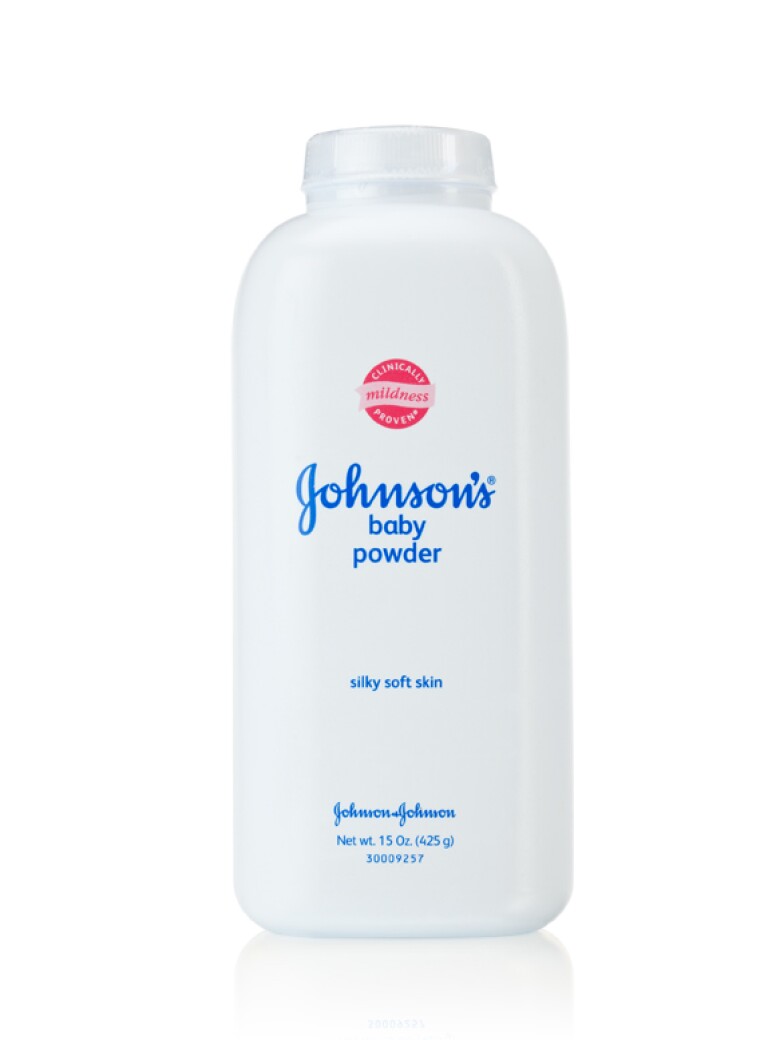Baby Powder made from cosmetic talc is one of JOHNSON’s oldest products and a longtime part of baby care rituals. JOHNSON’s Baby Powder continues to be popular with adults as well, and in many parts of the world, it remains an essential part of the makeup and skin care routines. With over 100 years of use, few ingredients have the same demonstrated performance, mildness and safety profile as cosmetic talc.
We wanted to take this opportunity to share the facts about talc, so you’re well-informed.
- JOHNSON’s talc products do not contain asbestos. A frequent misperception is that JOHNSON’s Baby Powder contains talc made with asbestos, a substance classified as cancer-causing. Since the 1970s, talc used in consumer products has been required to be asbestos-free. JOHNSON’S® Baby Powder products contain only U.S. Pharmacopeia (USP) grade talc, which meets the highest quality, purity and compliance standards.
- The safety of talc is based on a long history of safe use and decades of research by independent researchers and scientific review boards. Talc is accepted as safe for use in cosmetic and personal care products by the European Union, Canada and many other countries around the world, among them Argentina, Brazil, China, India, Israel, South Africa, Turkey and Indonesia.The U.S. Center for Disease Control (CDC), which identifies potential risk factors for many diseases, has not identified talc as a risk factor for ovarian cancer.
- The Nurses’ Health Study (2010) and the Women’s Health Initiative Observational Cohort (2014), the only two large-scale prospective studies looking at talc and ovarian cancer, found no causal relationship between talc and ovarian cancer.
What is talc?
Talc, commonly known as talcum powder, is a naturally occurring mineral. Chemically referred to as hydrated magnesium silicate, it has the formula H2Mg3(SiO3)4 or Mg3Si4O10(OH)2. Talc is a highly stable, chemically inert, odorless white powder. It is the world’s softest mineral.
The grade of talc used in cosmetics is of high purity, comparable to that used for pharmaceutical applications, and is free from asbestos and asbestiform fibers. Cosmetic grade talc is only mined from select deposits from certified locations, and milled to relatively large, non-respirable particles size.
Why and where is talc used?
The most common cosmetic application for talc is in face, body, and baby powders. Talc has a characteristic soft, silky, and dry feel. The softness is derived from the unusual sheet like crystals, which easily glide past each other. The surfaces of individual crystal sheets are hydrophobic, while the edges are hydrophilic. On the skin, talc absorbs both oils and water, gives a cooling sensation, and helps to prevent chafing.
Other applications include color cosmetics, soaps, toothpastes, antiperspirants, chewing gum, and drug tablets.
Our sources for talc undergo comprehensive qualification. The incoming talc is routinely evaluated using a sophisticated battery of tests designed to ensure quality, safety, and compliance with all global standards.
For more information, please visit our Safety and Care Commitment site.
